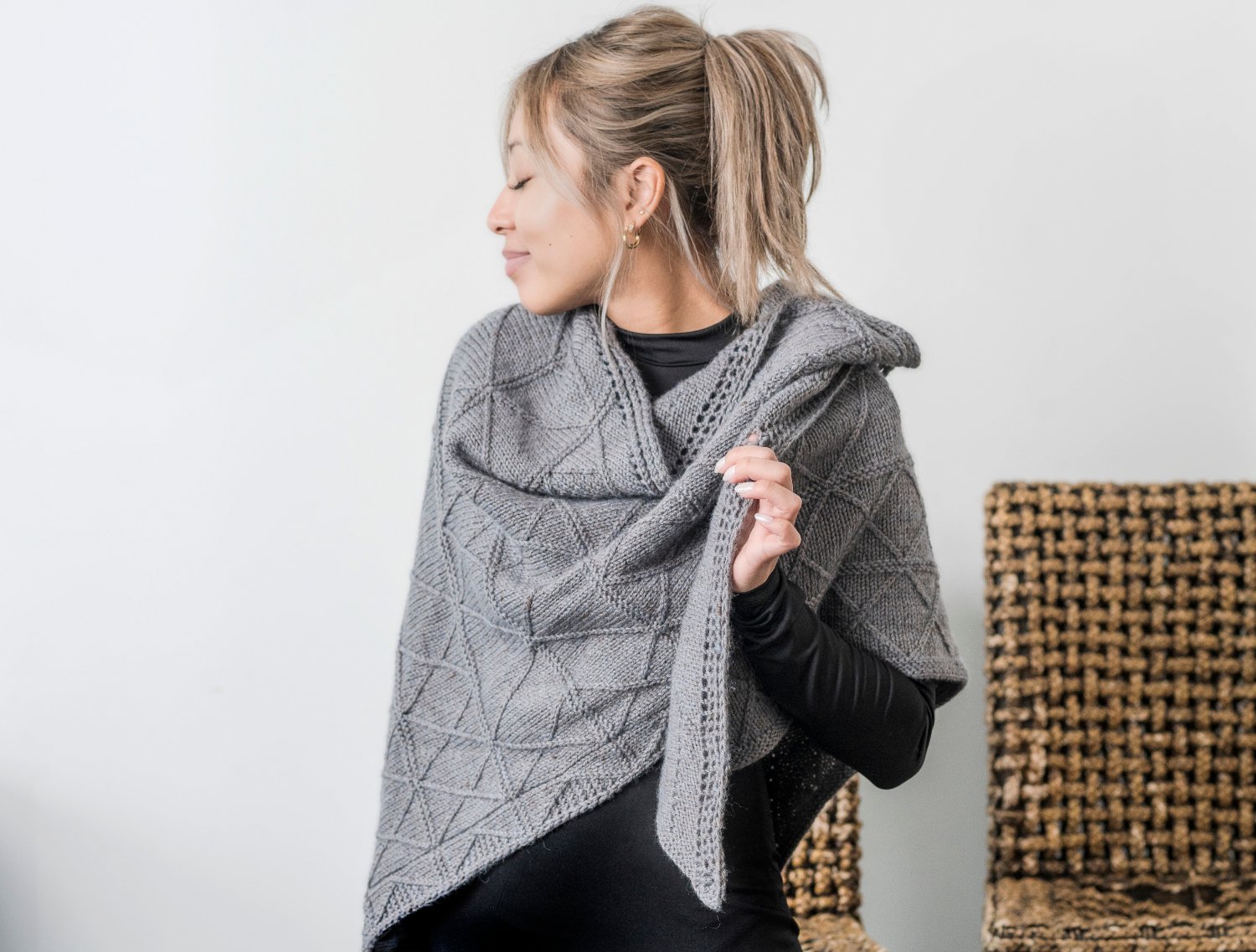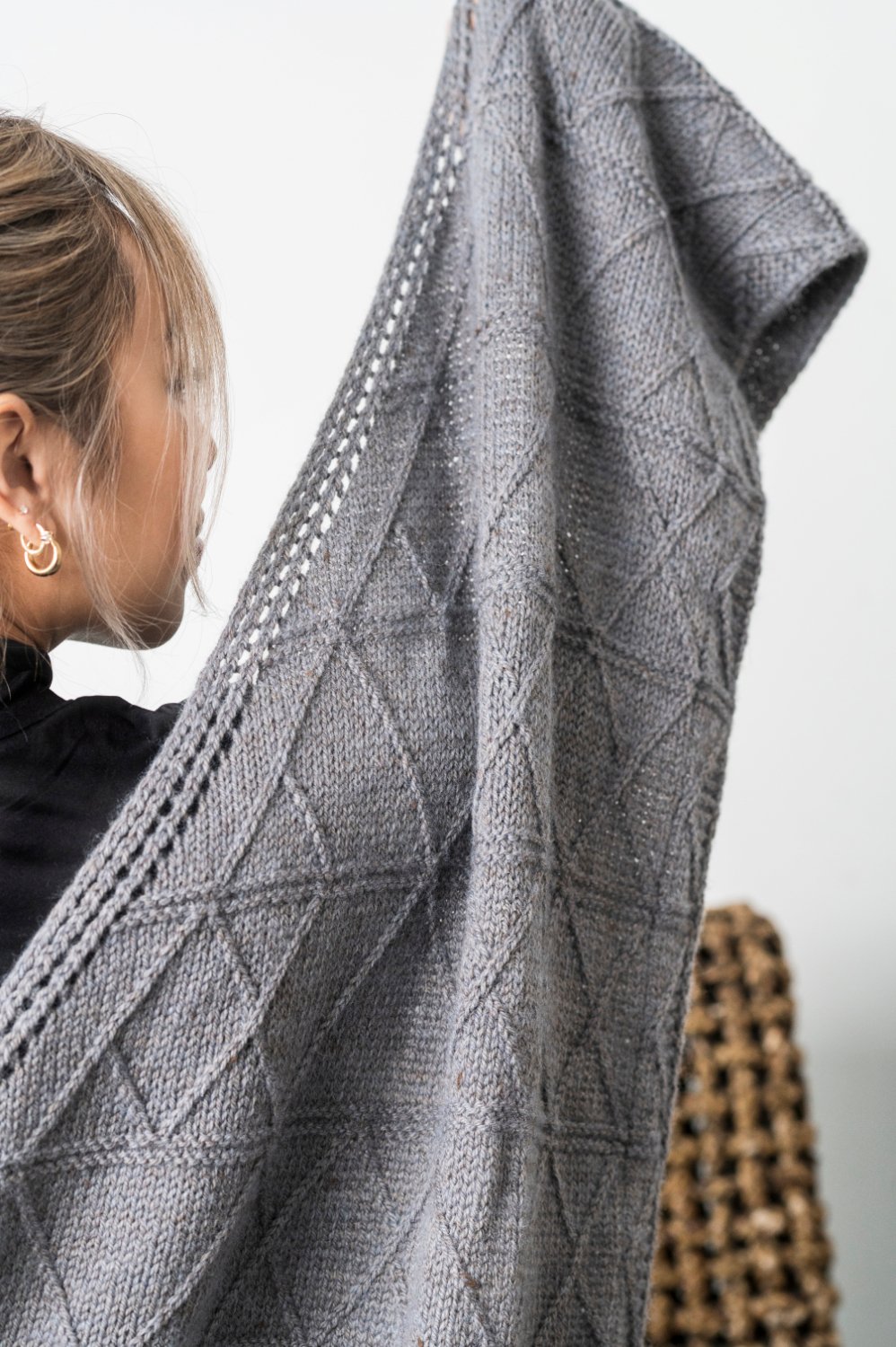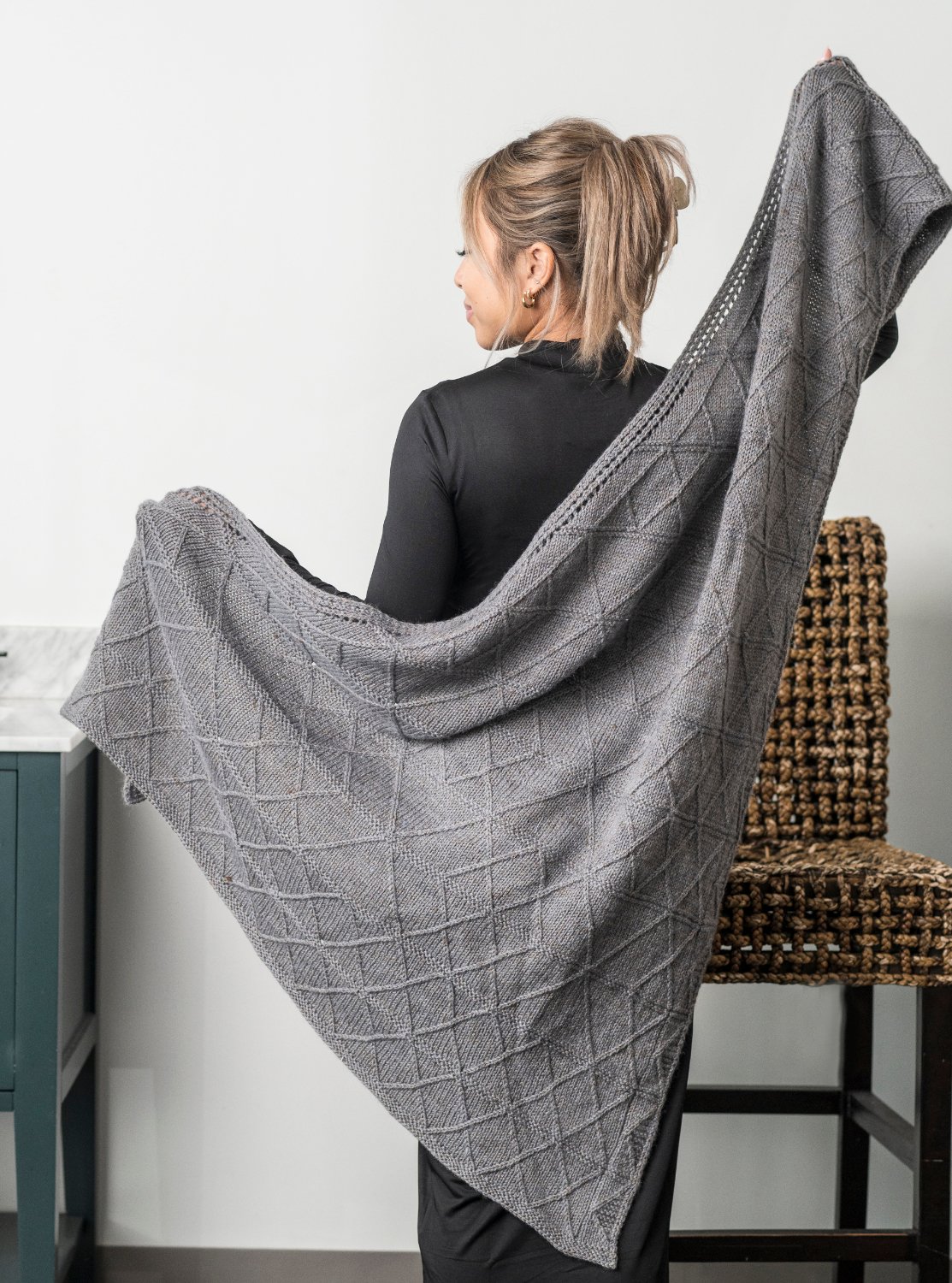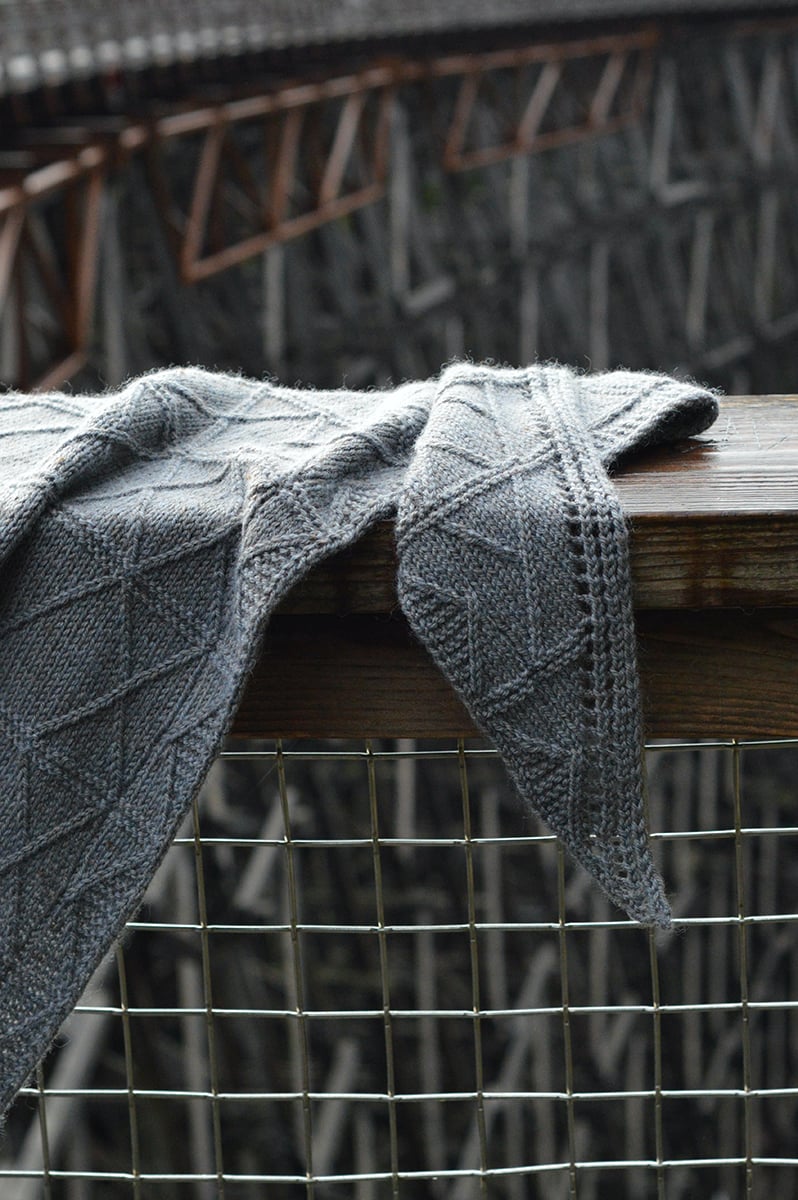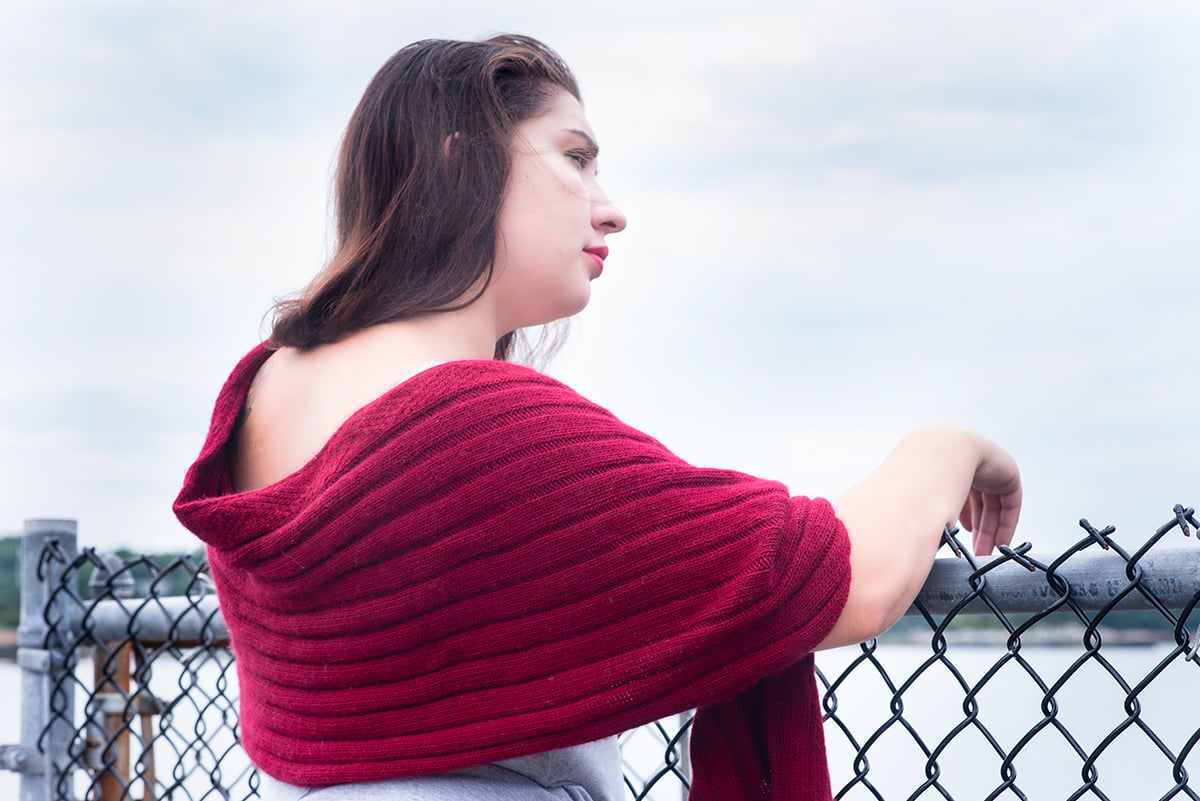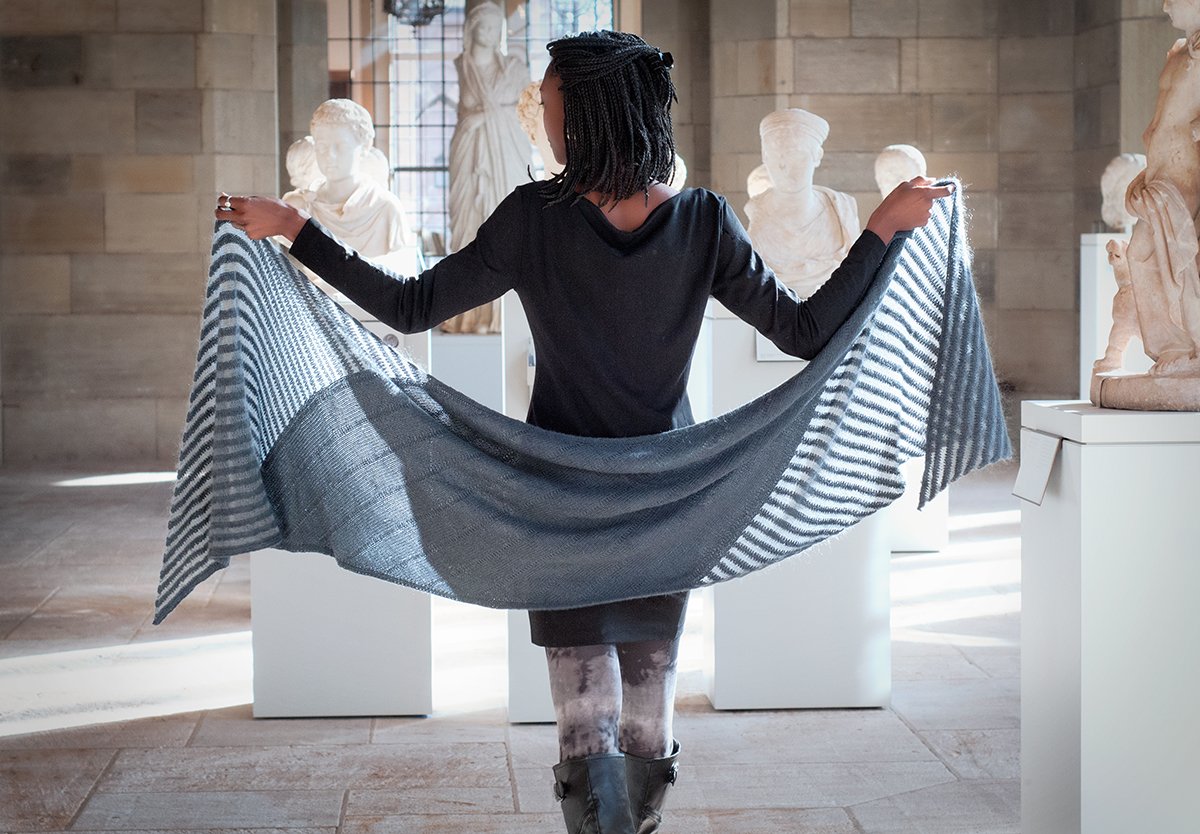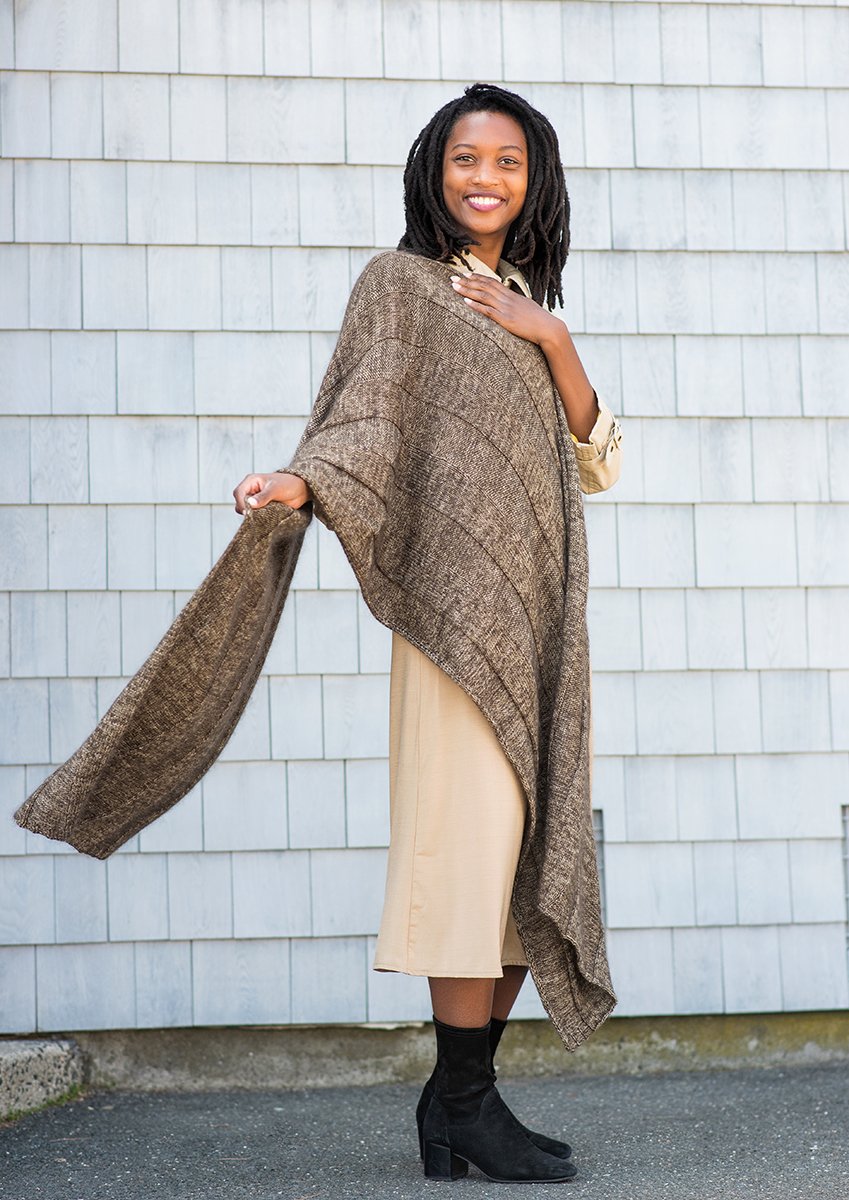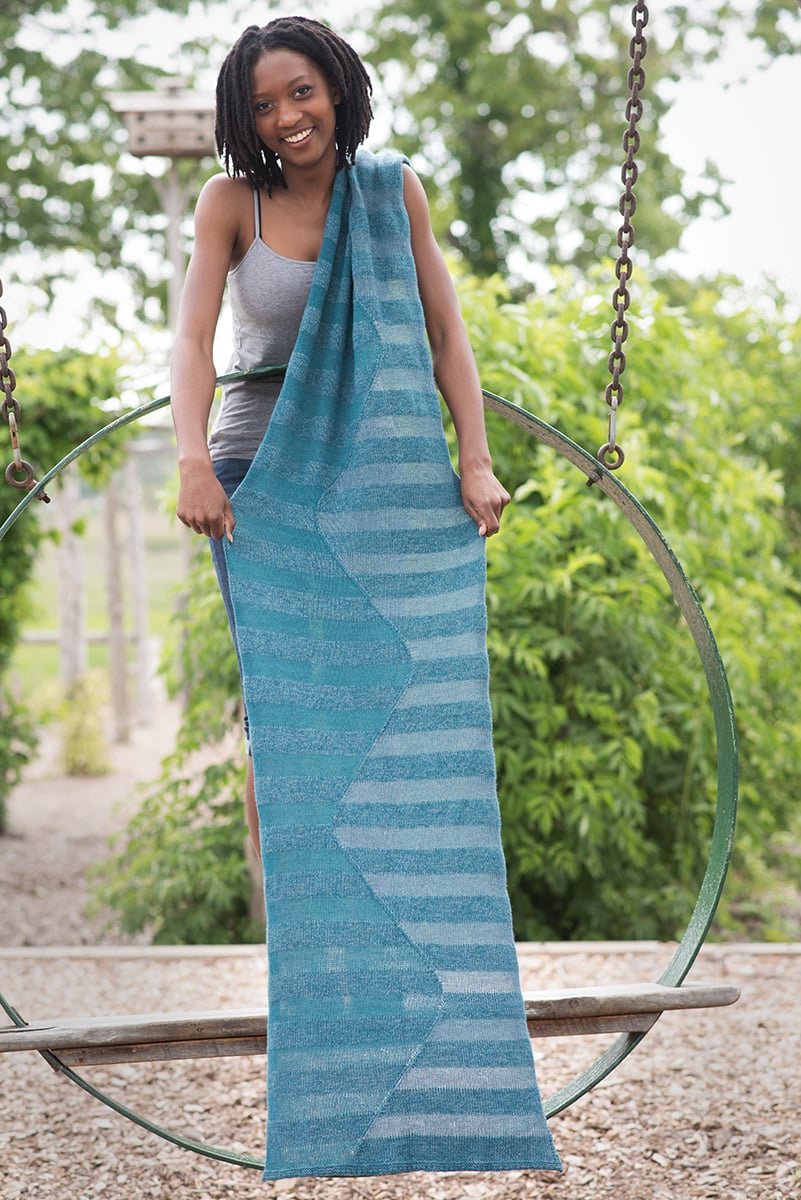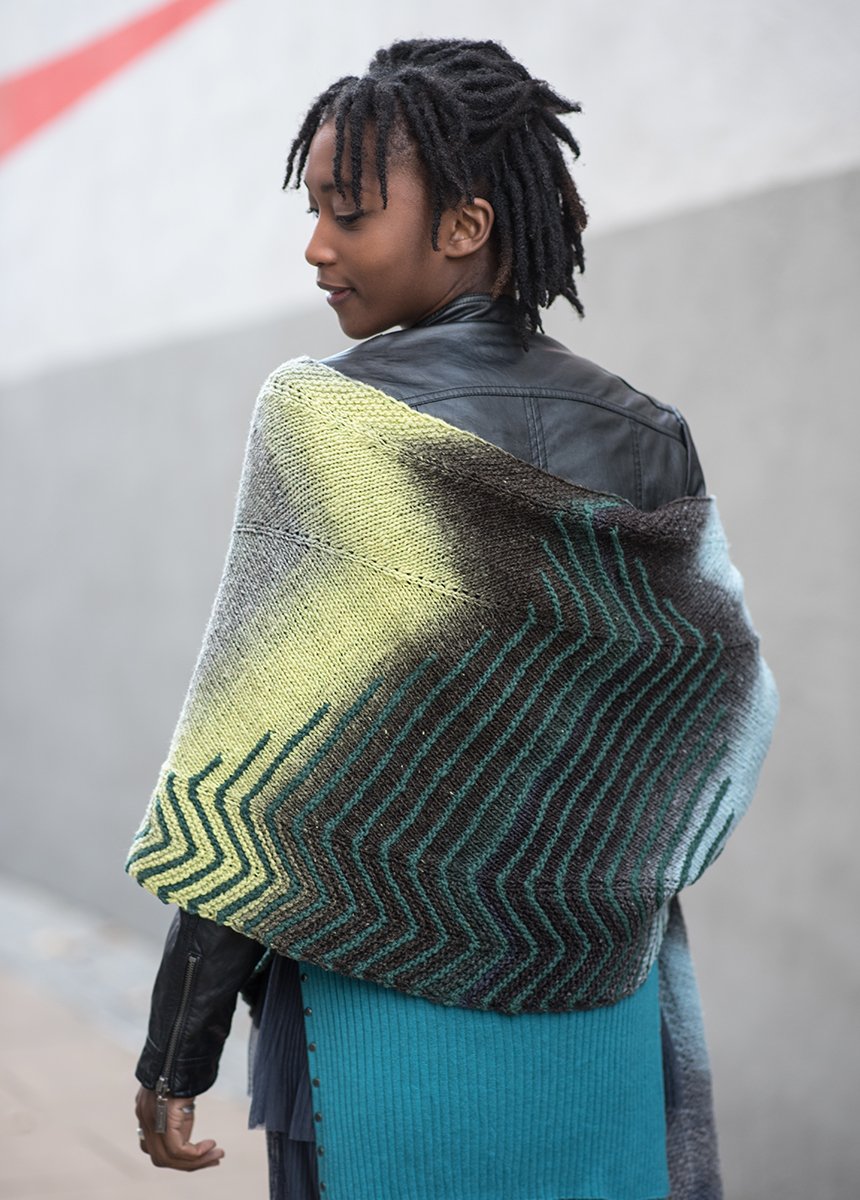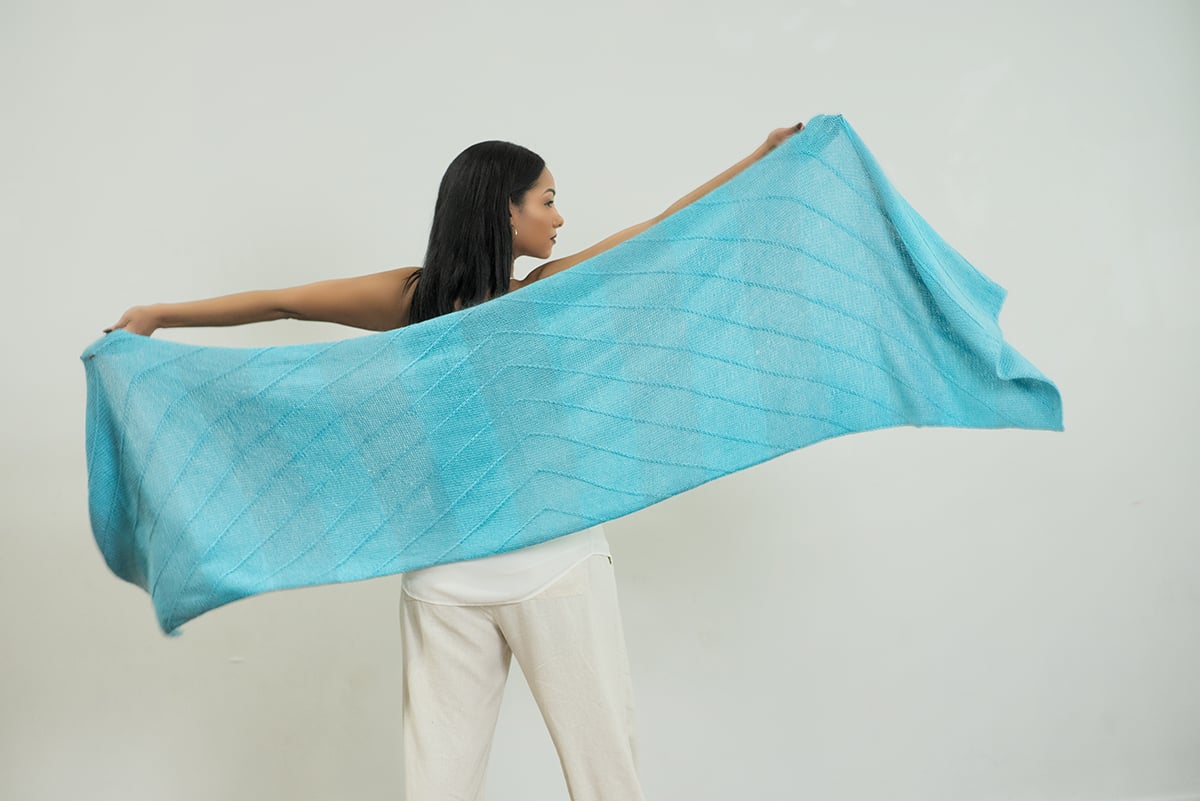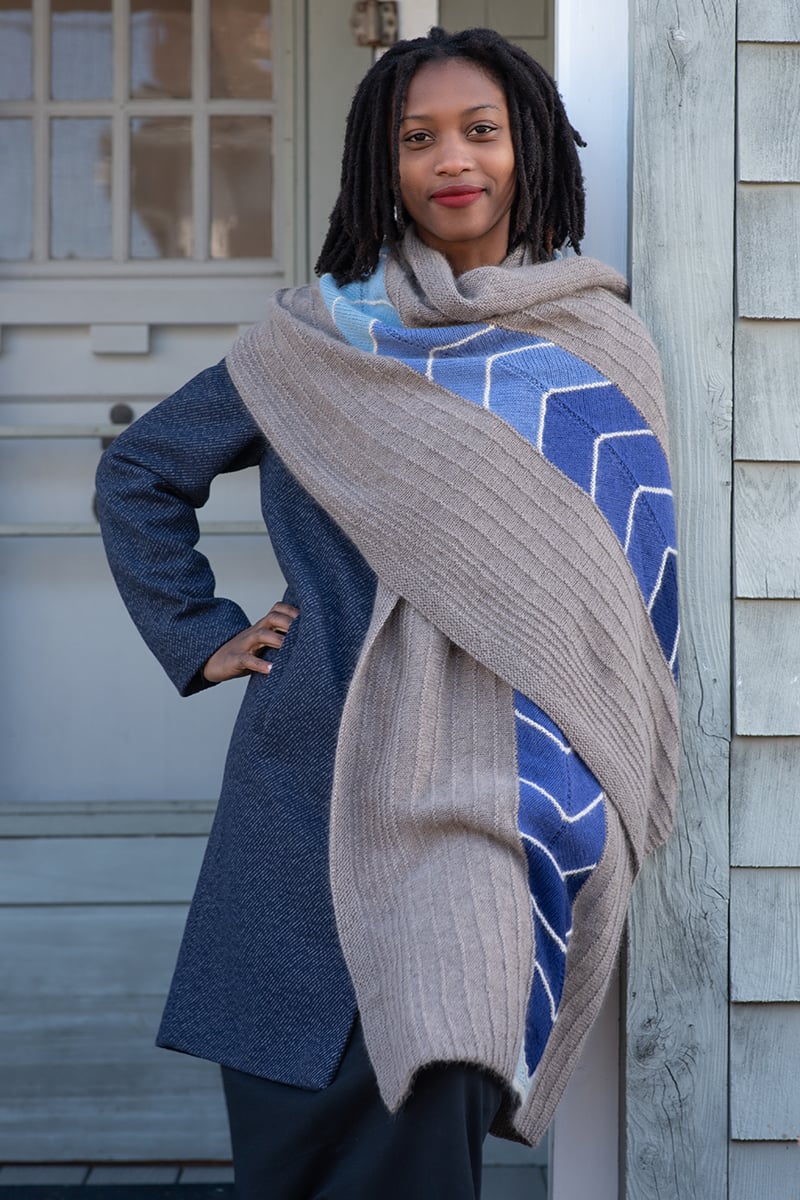Kinsol
The stitch patterns in Kinsol are inspired by the Kinsol Trestle, one of the tallest timber rail trestle bridges in the world. You work this shawl as a sideways triangle, echoing the shape of the valley as the twisted stitch patterns grow to fill the shape.
Spanning the Koksilah River in the Cowichan Valley of British Columbia, this former railway bridge has been turned into a spectacular walking and cycling trail. The Kinsol Trestle bridge is now part of the Trans Canada Trail and the Vancouver Island Trail.
To make Kinsol (the shawl, not the bridge), you will need to know how to read knitting charts, knit, purl, increase, and decrease. The pattern includes an illustrated tutorial for working the twisted stitches so that they stand out from the fabric. The instructions for Kinsol are charted only.
This pattern was originally published at digitsandthreads.ca, an online magazine covering Canadian textile arts, and is available there with a Studio membership.
Finished Measurements
Measurements of sample
Width at top edge: 198 cm/78 inches
Depth: 95.5 cm/37.5 inches
Yarn
Ancient Arts Yarns Lascaux Worsted 25% Manx Loaghtan, 75% Punta Arenas Wool; 220 yds/200 m per 3.5 oz/100 g; colour: Rill; 5 skeins
Needles
- US #8/5 mm needle for working flat, or the size needed for gauge—recommend a 32 in/80 cm or longer circular needle
- US #7/4.5 mm needle for working flat, or one size smaller than your gauge needle—recommend a 32 in/80 cm or longer circular needle
Notions
Stitch markers
Yarn needle
Gauge
Sample was worked at:
18 sts/25 rows = 10 cm/4 inches in stockinette stitch after blocking without pins.
1 large x motif = 13.5 cm/5.25 inches wide × 17 cm/6.75 long.
Exact gauge is not essential for this project, though differences in gauge will affect the size and amount of yarn required.
About the yarn:
Ancient Arts Lascaux Worsted is a 3-ply, hand-dyed, non-superwash wool yarn with a woolly, yet slightly silky hand, good memory, and a lovely drape. The number of plies and the yarn’s smooth texture make the twisted stitches stand out. The slight tonal variation gives depth and body to the colour without detracting from the stitch pattern.
If you’re substituting yarn, look for a smooth worsted weight yarn composed of 3 or more plies, with some memory, that gives a cohesive fabric at the pattern’s gauge. You will need approximately 1070 m/1170 yds.


